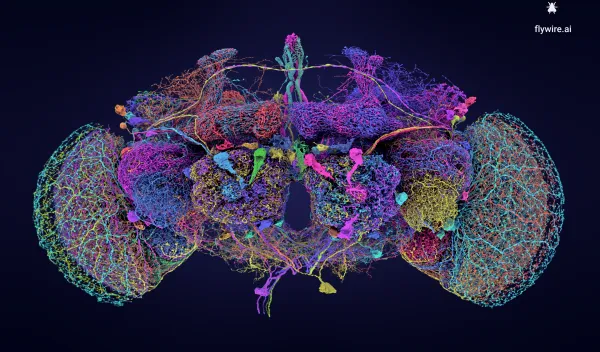
Creating the largest, most comprehensive picture of neural connections to date
Flip a switch on the wall, and it turns on a light across the room through a simple circuit. Now add 140,000 other switches and try and figure out which one controls the light. That is similar to the challenge undertaken by an international consortium of researchers, partially supported by the NSF Next Generation Networks for Neuroscience (NSF NeuroNex) program, who have worked to map all of the connections in the brain of an adult fruit fly. The map, known as a connectome, will aid in understanding the inner workings of the brain and how it controls behavior and is already spurring new experiments and models.
Fruit flies may be very small, but mapping their brain is no easy task. There are on the order of 140,000 neurons and over 8,000 cell types identified in the newly published connectome. The research team used automation and artificial intelligence to piece together the connections from data created using electron microscopy. This connectome is the largest created to date, with some of the same researchers previously publishing a map of a larval fruit fly brain that was at the time the largest connectome created.
The new research, published as part of a package of related articles in Nature, was co-authored by the FlyWire Consortium, which brought together hundreds of scientists from across the globe to collaborate on linking neuronal wiring with brain function. Part of the consortium included members of the NSF NeuroNex international network Enabling Identification and Impact of Synaptic Weight in Functional Networks.
"NeuroNex has brought together researchers across disciplines and continents, linking them with access to innovative tools and resources, and providing conceptual foundations so they can ask questions about how the brain works in a variety of species and discover general principles," said Edda Thiels, a program director in the NSF Directorate for Biological Sciences. "These large teams were a key component of the program and have helped to answer grand challenges in neuroscience and society."
The work was also supported by the Center for the Physics of Biological Function, an NSF Physics Frontiers Center.
